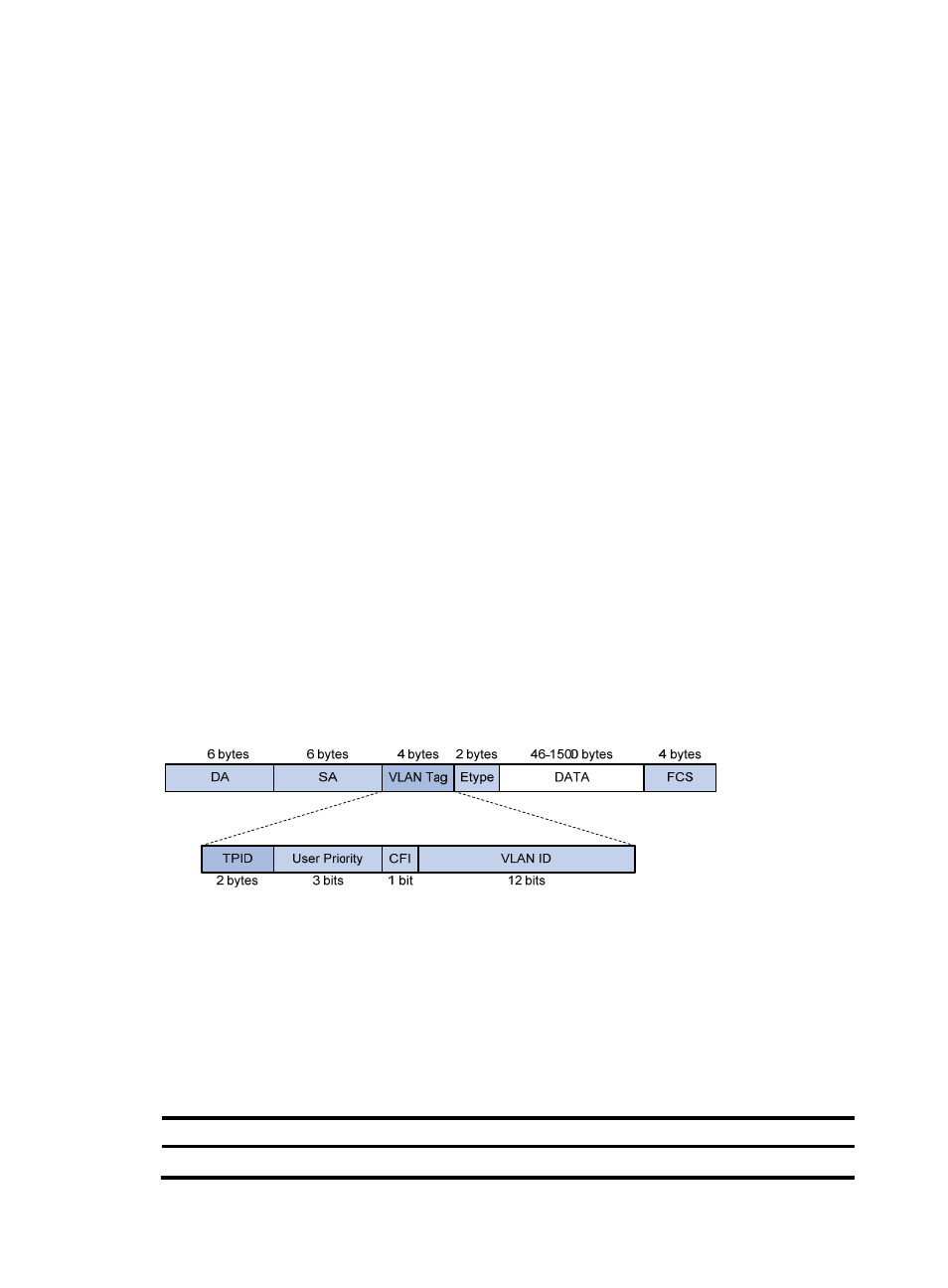Implementations of qinq, Modifying the tpid in a vlan tag – H3C Technologies H3C S12500 Series Switches User Manual
Page 153

140
The default maximum transmission unit (MTU) of an interface is 1500 bytes. The size of an outer VLAN
tag is 4 bytes. H3C recommends you to increase the MTU of each interface on the service provider
network to at least 1504 bytes. For more information about interface MTU configuration, see Interface
Configuration Guide.
Implementations of QinQ
H3C provides the following QinQ implementations: basic QinQ and selective QinQ.
1.
Basic QinQ
Basic QinQ enables a port to tag any incoming frames with its default VLAN tag, regardless of
whether they have been tagged or not. If an incoming frame has been tagged, it becomes a
double-tagged frame. If not, it becomes a frame tagged with the port's default VLAN tag.
2.
Selective QinQ
Selective QinQ is more flexible than basic QinQ. In addition to all the functions of basic QinQ,
selective QinQ enables a port to perform the following per-CVLAN actions for incoming frames:
{
Tag frames from different CVLANs with different SVLAN tags.
{
Mark the outer VLAN 802.1p priority based on the existing inner VLAN 802.1p priority.
Besides being able to separate the service provider network from the customer networks, selective
QinQ provides abundant service features and allows more flexible networking.
Modifying the TPID in a VLAN tag
A VLAN tag uses the tag protocol identifier (TPID) field to identify the protocol type of the tag. The default
value of this field, as defined in IEEE 802.1Q, is 0x8100.
shows the 802.1Q-defined tag structure of an Ethernet frame.
Figure 45 VLAN tag structure of an Ethernet frame
Devices of different vendors might set the TPID of the outer VLAN tag of QinQ frames to different values.
For compatibility with these devices, modify the TPID value so that the QinQ frames, when sent to the
public network, carry the TPID value identical to the value of a particular vendor to allow interoperability
with the devices of that vendor.
The TPID in an Ethernet frame has the same position as the protocol type field in a frame without a VLAN
tag. To avoid problems in packet forwarding and handling in the network, do not set the TPID value to
any of the values in
.
Table 18 Reserved protocol type values
Protocol type Value
ARP 0x0806